Never taking a step outside is the only guaranteed way to prevent backcountry accidents. However, for avid outdoorsmen, that’s no way to live. The best solution? Pack the emergency gear that will prepare you for almost every imaginable situation. Thankfully, The Mountaineers, a climbing and outdoor club, thought to make a checklist for just that reason, although it was made almost a century ago. As its name implies, The 10 Essentials is a brief list of the types of outdoor gear and equipment that every adventurer should pack for the backcountry. No matter how far you’re trekking or how long you’re planning to be offline, this is the critical gear you need to survive.
Backpacking Checklist:
The Mountaineers’ original checklist has been updated since it was first written in the 1930s. Here, we present our slightly modified version with all the essentials a modern outdoorsmen needs in the backcountry:
- Navigation: Map and compass
- Sun protection: Sunglasses and sunscreen
- Illumination: Headlamp
- First-aid: Kit or supplies
- Fire: Waterproof matches or lighter
- Nutrition: Extra food
- Hydration: Extra water or filter
- Insulation: Extra clothing
- Tools: Multitool
- Emergency shelter: Blanket or lightweight bivvy
- Communication device: Cellphones or satellite phones
This brief list is deceptively simple, even obvious. But, it’s easy to forget an item or two and, in an emergency, one of those unpacked items could prove to be the most crucial element to your survival. Here are our recommendations for all the essentials you’ll need for your next outdoor adventure.













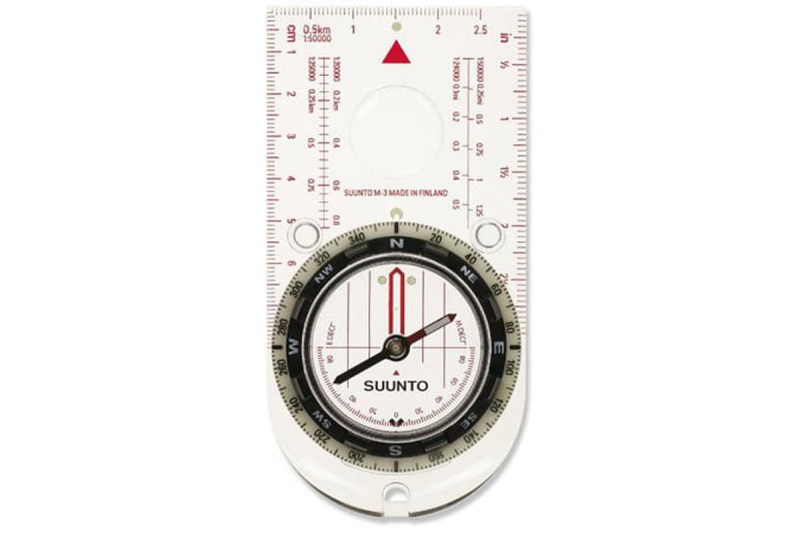
Essential No. 1: Map and Compass
Suunto M-3 D Leader Compass
The most state-of-the-art GPS device or mobile navigation app is useless without electricity. Batteries die, electronics can get wet, or your gadgets could take an unexpected fall and stop working altogether. That’s why it’s critical to pack an old-school map and compass. Need to brush up on your navigation skills? Start with learning how to use a compass and how to read a topographical map. Highly detailed topographical maps for the National Parks, BLM Land, and the like are readily available online.
In addition to its fantastic fitness watches, Suunto is a world leader in compasses. Its M-3 D Leader Compass is a reliable, field-tested baseplate compass designed for even the most extreme adventures. A built-in magnifying lens and luminescent markings make it easy to read, day or night, in virtually any lighting or weather.


Essential No. 2: Sunglasses and Sunscreen
Spy Optic Dirty Mo Sunglasses
Sun protection is critical in the backcountry, even on overcast days or when you think you’re layered enough that sunburns aren’t a risk. Start with proper SPF-rated layering, but also be sure to pack sunglasses and sunscreen.
The best sunglasses offer both UVA and UVB protection and, if you’re spending any time near snow or water, polarized lenses are a good feature, too. Spy Optic’s Dirty Mo sunglasses offer all these features and more. With a sharp, midsize wrap design and a chiseled surface, they’re bold, lightweight, and versatile for just about any environment or adventure.


Essential No. 3: Sunscreen
All Good Mineral Sunstick SPF30 Sunscreen
All Good’s line of organic products is great for the skin and the planet (it’s a certified B-Corporation). The brand’s Mineral Sunstick sunscreen delivers broad-spectrum sun protection without leaving your face greasy or chalky. It’s also reef-safe, water-resistant, and the 0.6-ounce stick packs down small for daypacks.

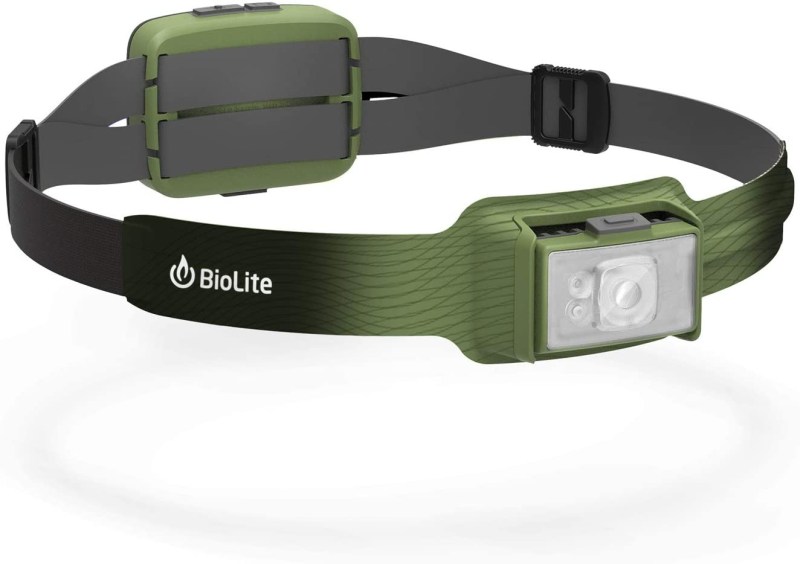
Essential No. 4: Headlamp
BioLite HeadLamp 750
A good headlamp offers the utility of a flashlight while keeping your hands free for tasks in the field. The best headlamps are lightweight, durable, rechargeable, and -- most importantly -- bright.
BioLite is a perennial favorite here at The Manual. The brand’s latest HeadLamp 750 offers everything we expect in a great headlamp. The lightweight design features a slim-fit construction and a comfortable, moisture-wicking fabric headband. The 750-lumen output is among the brightest on the market -- more than enough for everyday tasks and emergency situations in the backcountry. Multiple lenses, including red and white spot and flood modes, adapt to your needs and help maintain night vision.

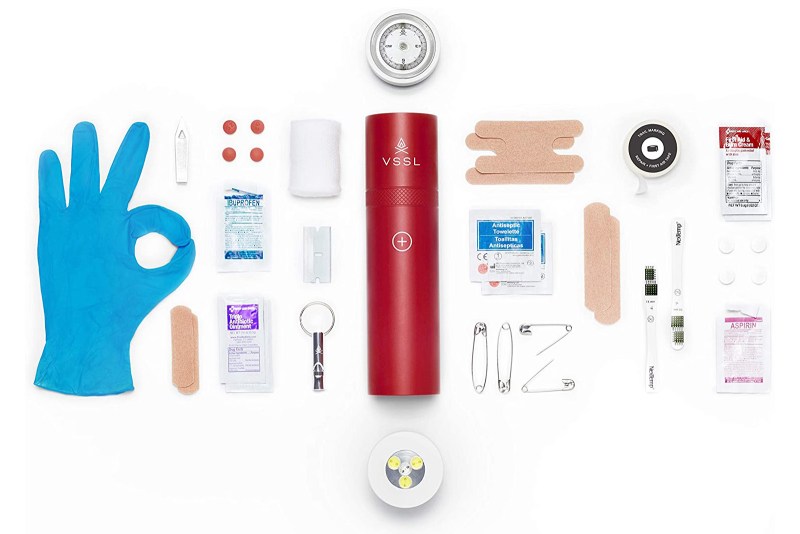
Essential No. 5: First-Aid Kit
VSSL Adventure-Ready First-Aid Kit
Most ready-made first-aid kits include essentials that work well for every type of adventure, weather, or survival situation. Start with a simple, pre-built kit and add on specific items you might need for your particular outing (think insect repellent, foot care, etc.).
As its name implies, VSSL’s Adventure-Ready First-Aid Kit is durable enough for any adventure. Inside, you’ll find almost 50 first-aid essentials, including a flashlight, precision compass, bandages, burn cream, pain relievers, tweezers, and more. It’s all packed into an ultra-compact, 9-inch tube made from waterproof, impact-resistant, military-grade aluminum.

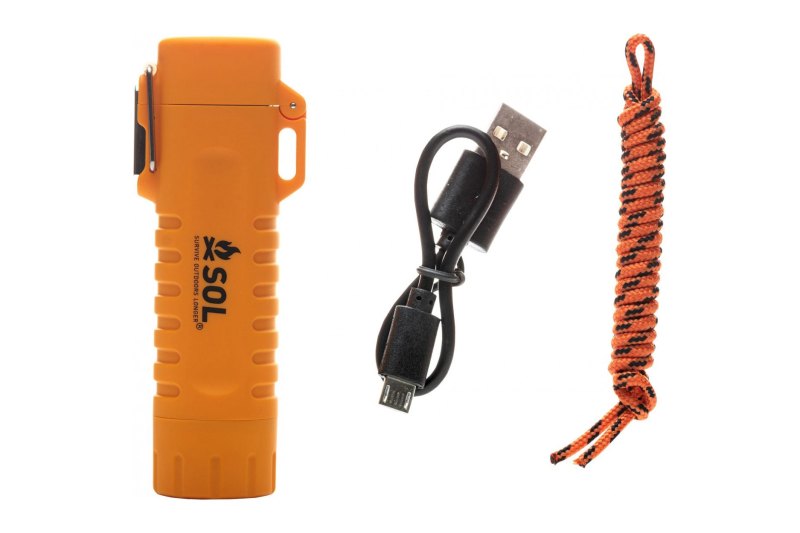
Essential No. 6: Lighter
Sol Fire Lite Fuel-Free Lighter
Heat and light from a fire can make a world of difference, which is why you should always have something with which to light a fire. Waterproof matches and a bit of dryer lint for tinder are a great, inexpensive backup. But, your primary fire source should be a reliable lighter as an outdoor fire starter.
Sol’s Fire Light Fuel-Free Lighter uses electricity to create dual top-facing arcs that ignite anything flammable on contact. At just 2 ounces, it’s lightweight and weatherproof, making it ideal for backcountry pursuits. Plus, the built-in LED light and tinder paracord lanyard add two bits of backup survival gear to your backpacking essentials kit.

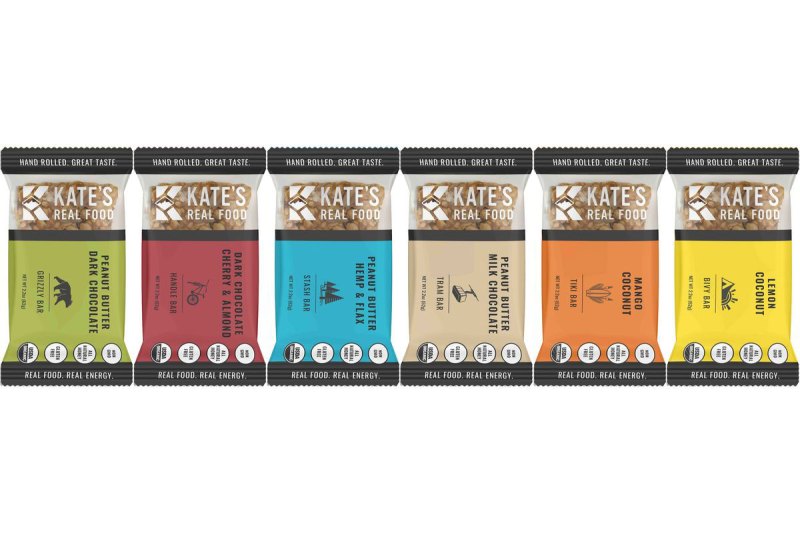
Essential No. 7: Extra Food
Kate’s Real Food 12-Bar Mixer
Always pack more than you think you will eat. If your hike or kayak trek takes longer than expected, you’ll be happy to find those extra bars or dehydrated meals at the bottom of your pack. High-calorie, nutrient-dense food that lasts a long time will keep you going the longest. Nuts, energy bars, and jerky are ideal.
Kate’s Real Food bars deliver everything we expect in a high-quality energy bar. They’re well-balanced, nutrient-dense, and 100% organic to boot. Plus, they taste great without the weird artificial aftertaste found in lesser bars.

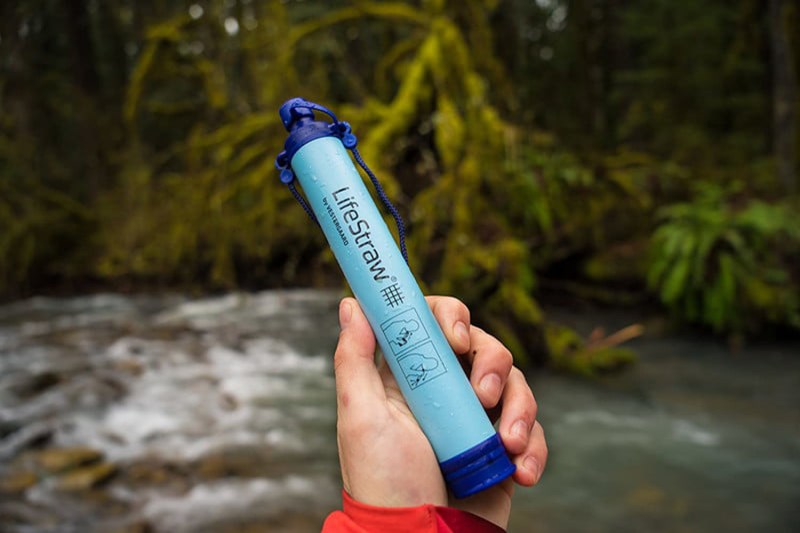
Essential No. 8: Hydration
LifeStraw Personal Water Filter
Bad situations get much, much worse without water. Humans can only go so long without it. It’s obvious but bears repeating: Always pack more bottled water than you think you’ll need. We love the convenience of a hydration bladder or hydration daypack, but you’ll want a portable water filter, too. In a survival situation, your water supply could run out quickly. You’ll need to be prepared to filter any water you find in the wild.
Unless you’re planning to trek far, far off-grid, you can likely leave the elaborate, multistage water purifier at home. LifeStraw’s Personal Water Filter is designed specifically for emergency purposes. It’s lightweight, affordable, compact, and filters up to 1,000 gallons of water without chemicals. It’s a great piece of emergency kit to keep in your backpack in the event of a survival situation.

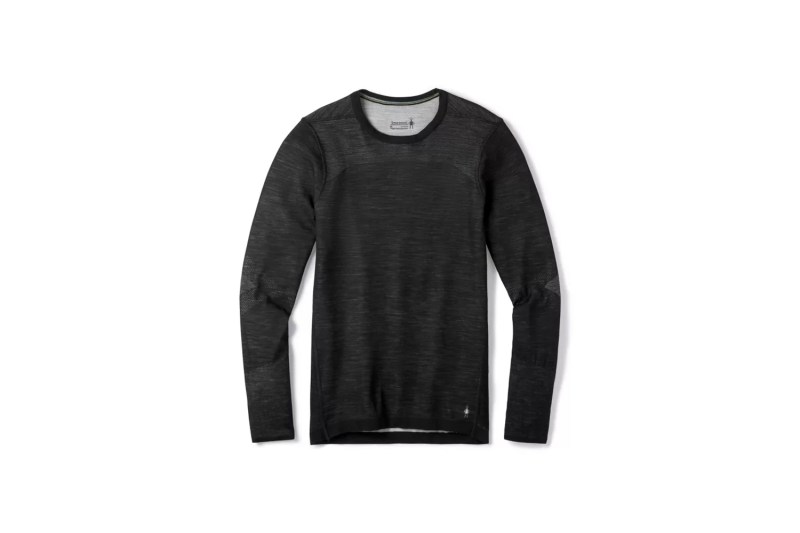
Essential No. 9: Extra Clothing
Smartwool Intraknit Merino 200 Crew
Whether you’re hiking in the mountains, the desert, or the tundra, the weather can change drastically without warning. It’s critical to have an extra layer or two, even if you’re sure you won’t need it. Pack a lightweight, water-resistant (or waterproof), preferably merino wool (never cotton) zip-up or pullover in the event of a sudden thundershower or blizzard. Because you just never know.
Smartwool’s Intraknit Merino 200 Crew Sweater is the perfect base or mid-layer. Buy your usual size and use it as a base layer, or size up and layer it over a closer-fitting T-shirt. The merino wool is soft, lightweight, and dries quickly. Most importantly, it’s warm when you need it to be: The perfect extra clothing addition to your daypack to stay ahead of changing weather.

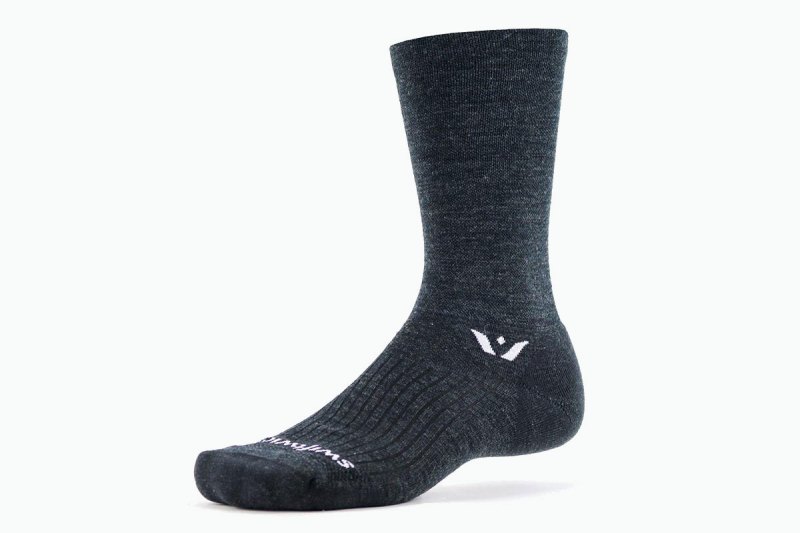
Essential No. 10: Extra Socks
Swiftwick Pursuit Seven Merino Wool Socks
Packing an extra pair of merino wool socks is always a smart move. If the mercury suddenly drops or your feet take an unexpected splash in the river, you’ll want an extra pair on hand. Swiftwick’s Pursuit Seven Merino Wool Socks blend soft, itch-free merino wool with nylon and spandex for maximum warmth, comfort, and moisture-wicking. Plus, a reinforced heel and toe add durability for intense off-trail adventures.


Essential No. 11: Multitool
Gerber Suspension-NXT Multi-Tool
Every man should own a reliable multitool in his EDC kit. This is especially important in the backcountry where you never know when you might need to strike a fire, build a shelter, or fix your pants. The “best” multitool is almost as personal as the best Johnny Cash album or the best Bruce Lee movie. It depends on you and what sort of adventures you’re into. At the very least, a multitool should have a knife, pliers, scissors, and an awl. And a bottle opener -- no self-respecting man should ever carry a multitool without a bottle opener.
Gerber’s Suspension-NXT Multi-Tool perfectly balances usability, versatility, size, and price. At just 6.4 ounces, the slim butterfly construction fits neatly into a front pocket. The spring-loaded design opens to reveal 15 essential lockable tools and, at less than $30, it’s practically free.


Essential No. 12: Emergency Blanket
SOL Emergency Bivvy
On the spectrum of essentials you absolutely need for survival, shelter is near the top. Short of having an actual tent or a cave to hold up in if things go really wrong, you’re going to need a way to stay warm. An ultra-lightweight emergency blanket or bivvy is just the trick.
SOL’s Emergency Bivvy is purpose-built for those rare occasions when you find yourself unexpectedly overnighting in the wilderness. It’s shaped like the best sleeping bag, but with the construction of a space blanket. It reflects 90% of your body heat, keeps out wind and water, and won’t tear like traditional mylar blankets. Plus, it packs down small into a sealed, waterproof bag, so it’s always ready to go.


Essential No. 13: Communication
Garmin inReach Mini
We’re fortunate to live in a time of unprecedented accessibility. That means being able to call or text from almost anywhere on earth. Packing a two-way satellite messenger is a smart last-resort backup if things really go sideways. Always plan and prepare as though you don’t have it in your pack, though, hoping you might be able to use it if and when you need it.
For compact, ultra-portable, emergency satellite messengers, Garmin’s inReach Mini is near-perfect. The palm-sized device tethers easily with a carabiner to the outside of your pack, and it’s so light you’ll probably forget it’s there. It provides basic two-way messaging functions, so you can keep your family and friends updated with your latest position. In an emergency, depressing the dedicated SOS button summons professional rescue services from almost anywhere on the planet.

While this may seem like a lot of stuff to get, you don't have to go out and buy it all tomorrow. Improvise and find different versions of these items, many of which you already have around the house. Already have a pocket knife? Great, hold off on getting the Gerber. Is there a box of matches or a lighter in a drawer somewhere in your house? Sweet. You can wait on buying the cool SOL fuel-free fire starter. Cost can be a huge barrier of entry for folks getting into the outdoor space, but it doesn't have to be. The 10 Essentials, or in this case 13, will help you enjoy your outdoor adventures, and will make you better prepared for whatever comes your way. Find the version of this list that works for you and your budget and go enjoy yourself!
Editors' Recommendations
- Upgrade to the best warm-weather hiking gear of 2023
- The best merino wool socks (whether you’re hiking, skiing, or going to work)
- The ultimate ultralight backpacking gear list: This is everything you need
- The Best Hydration Packs for Hiking, Trail Running, and Day Trips
- The 6 Best Day Hikes in U.S. National Parks



